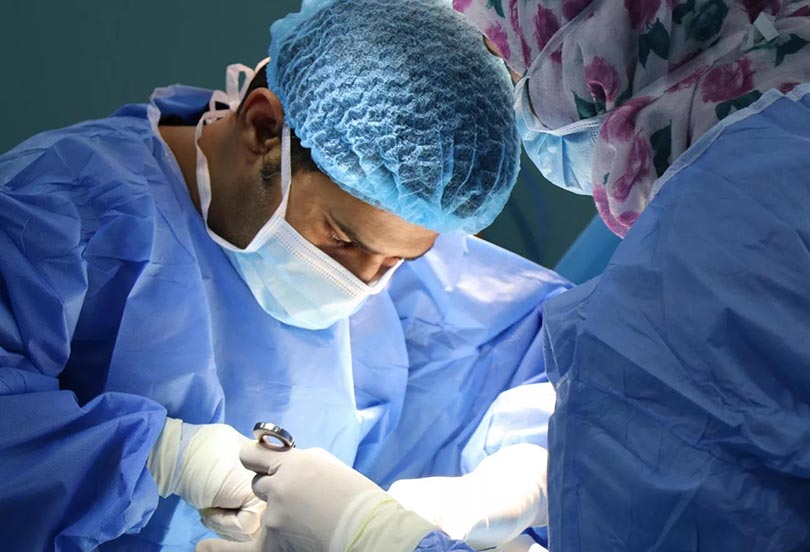
15 Nov The Doctor Will See You Now: How Healthcare Facilities Have Expanded Access To Care
November 15, 2022, by Elizabeth Reyn, Studio B Writer
Read the original article in Bisnow » (requires subscription)
Surgery, even as an outpatient procedure, can be a complicated, overwhelming experience, and the last thing patients should have to worry about is arranging travel to a hospital far from their home. A 2018 Pew Research Center study showed that 18% of Americans live more than 10 miles away from the nearest hospital, and 42% of Americans live more than 5 miles away from one.
To expand access to care, hospitals and clinics have begun opening outpatient facilities such as ambulatory surgical centers. These healthcare facilities may not be located in a hospital, but they have the staff and equipment needed to serve patients’ specific needs, including outpatient surgical procedures.
CUBE 3 principal Matthew Bluette, a member of the design firm’s health division, said these centers speak to the trend of patients becoming more in tune with their healthcare needs and preference for receiving treatment outside of the hospital, closer to their home.
“There has been a tremendous shift with people who want to receive care in their own communities instead of going to the hospital or large medical center where people are being treated for more serious conditions,” Bluette said. “Visiting an outpatient facility provides a completely different feel to the healthcare experience.”
Bluette said the hospital setting isn’t ideal for the quick and high turnover of surgical procedures. This is why hospital systems often do a joint venture with commercial real estate professionals to assist in creating a business model that is more efficient and better suited to ambulatory surgery.
“Historically, hospitals have been heavy on real estate, which ties up capital, making new off-campus projects a challenge,” Bluette said, “Additionally, they make excellent tenants because they’re going to occupy a space for a long time. It’s advantageous for them to work with developers because then they have someone in the business of real estate and property management who understand the unique aspects related to managing an off-campus facility.”
Bluette outlined a trend of ambulatory surgery centers, or ASCs, created through a business arrangement between the developer, who is responsible for construction and maintenance, and the hospital, which brings patients into the ASC. One trend that hospitals have been exploring is taking part in a lease-back program, in which these facilities are owned by the hospital but leased out to a developer for property management. Alternatively, some hospitals have sold their buildings to developers and become tenants.
“Options such as these allow the hospitals to have more funding to allocate for patient care,” Bluette said.
He added that while hospitals of any size can partner with developers, community hospital systems in particular, with whom CUBE 3 typically works, may want to take advantage of these business arrangements, as they may not have the financial and management depth for off-campus facilities.
“Hospitals typically employ in-house staff, such as electricians, plumbers and HVAC technicians along with security personnel that already have a lot of responsibilities managing the hospital campus, making it difficult and expensive for this type of staff to manage off-site locations,” Bluette said.
He said the majority of surgical volume that health systems have been shifting out of the hospital and into an ASC are orthopedic procedures, from routine and hand surgery, to the most complex total joint replacements. This is because unlike emergency surgeries, they can be planned out in advance and require less clinical support space, which allows doctors to take on more patients and better manage their workloads.
“Orthopedic surgical procedures have been the biggest driver for these facilities because the procedures tend to be somewhat consistent and have set times with limited complications,” Bluette said. “The director of an ASC can use these timetables to figure out how much volume they can handle.”
He said that the volume drives the investment that will eventually be made and in right-sizing the program.
“Reimbursement for surgical procedures in an ASC setting is significantly less than at the hospital so the footprint needs to be small and efficient allowing for more volume,” he said. “This smaller and more efficient footprint also requires hospitals to identify which physicians are best suited to this setting.”
He added that while more surgeries are taking place in ASCs, hospitals are also looking into new ways to streamline their inpatient procedures, such as using embedded imaging modalities in the operating room. This technology can help with making medically complex procedures, such as heart valve replacement, less invasive.
Bluette said that healthcare development will likely continue in the direction of reducing physical footprints while at the same time expanding its services through telemedicine for well visits, kiosks and terminals to expedite the check-in and checkout processes and other features that reduce the need for physical space and promote efficiency.
“We’re hoping that the process of streamlining will continue, with Covid showing it can work on a grand scale,” Bluette said. “I firmly believe that as more healthcare providers implement successful projects, business-wise, other healthcare systems will need to get on board with the trend of moving high-turnover ambulatory surgical procedures out of the hospital campus and into a more efficient and cost-effective setting.”
This article was produced in collaboration between Studio B and CUBE 3. Bisnow news staff was not involved in the production of this content.
Studio B is Bisnow’s in-house content and design studio. To learn more about how Studio B can help your team, reach out to studio@bisnow.com.
Contact Elizabeth Reyn at elizabeth.reyn@bisnow.com






